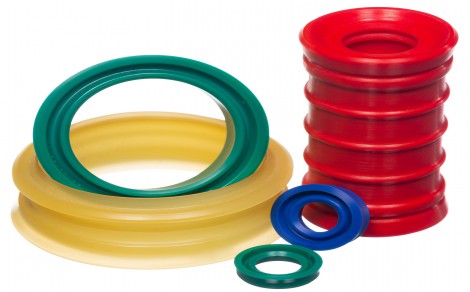- Home » Editorial » Hydraulics
Seal of approval – The Polyurethane advantage

In abrasion tests, Polyurethane has a quarter of the wear rates shown by typical rubber sealing materials such as NBR. Its tensile and tear strengths are typically 3-5 times higher than rubber seal materials, and although it lacks the chemical resistance and temperature capability of PTFE, it is compatible with mineral oils. Combined with a friction coefficient much lower than rubber, these properties make it an ideal sealing material for dynamic seals and scrapers on hydraulic and pneumatic actuators and valves
Polyurethane seal materials typically have a general operating temperature range of around -35degC to +110degC, although more specialist grades can remain flexible down to -50degC, and other grades can push the upper limit to around 130degC.
Seals can be machined or injection moulded, giving high and low volume manufacturing options and commercial flexibility at both prototype and production stages of a project.
Care must be taken to ensure sealing fluid resistance and temperature capabilities are always considered (as is the case when selecting any seal material), but in many hydraulic and pneumatic applications, Polyurethane can often bring performance and whole-life cost advantages over rubber or PTFE options and bridges the gap in capabilities between these material groups
https://www.linkedin.com/company/ceetakltd/
-
PPMA 2025
23 September, 2025, 9:30 - 25 September, 2025, 16:00
NEC, Birmingham UK -
Advanced Engineering Show 2025
29 October, 2025, 9:00 - 30 October, 2025, 16:00
NEC, Birmingham UK










